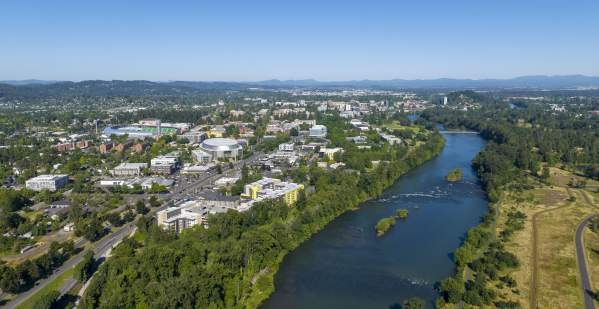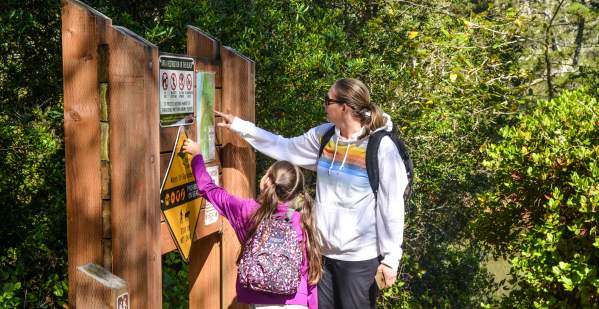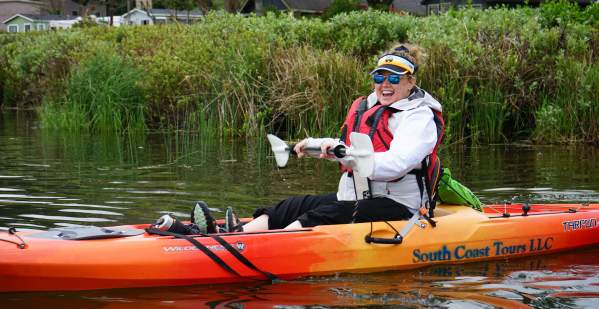On September 3, 1964 President Lyndon B. Johnson signed into law the Wilderness Act, a landmark conservation bill that protects nearly 110 million acres from coast to coast. The Wilderness Act defined “wilderness” as areas where the earth and its communities of life are left unchanged by people, where the primary forces of nature are in control, and where people themselves are visitors who do not remain.
The Eugene, Cascades & Coast region touches six Wilderness preserves.
A Northwest Forest Pass is required for almost all of the trailheads. Oregon Pacific Coast Passports are accepted for the coastal Wilderness areas.
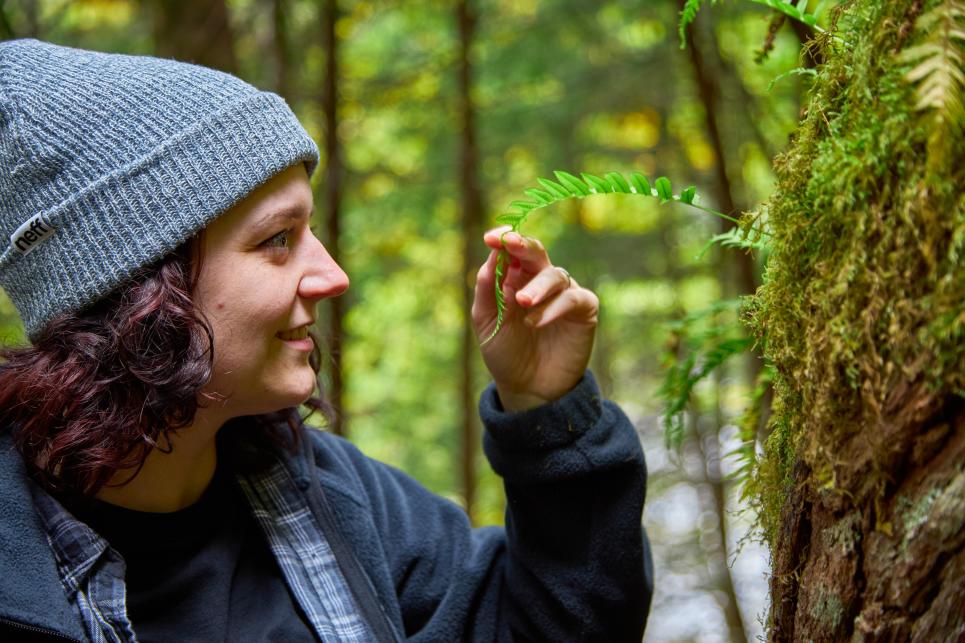
Forest hiking in the Cascades
Coast Range
1. Cummins Creek Wilderness
We’ll start our journey of our Wilderness Wonders on the Oregon Coast. The Cummins Creek Wilderness is a feast for your eyes and feet. Located in the Siuslaw National Forest, this area is unique because it is where the wilderness connects to the ocean. That proximity creates unique ecosystems and climates where wildlife move from shore to the forest and back again within these wilderness watersheds. Bob Creek and Cummins Creek flow from the wilderness into the ocean. Flanked by Cape Perpetua Scenic Area and Neptune State Park, the Cummins Ridge Trail (5.8 miles / 9.33 km long) ascends more than 1,000 feet (304.8 m) through towering Sitka spruce, Western hemlock and Douglas firs in the Coast Range. This area is also home to the only old-growth Sitka Spruce forest in the entire Oregon wilderness system.
Getting there: This area is accessible from Highway 101 — 15 miles (24 km) north of Florence, Oregon. From Highway 101 turn east on Tenmile Creek Road (Forest Service Rd 5210), drive carefully and after 1.9 miles (3.05 km) make a left turn on Forest Service Rd 5694. After 7.7 miles (12.39 km) turn left on Forest Service Rd 515 for 0.2 miles (.32 km) to Cummins Ridge East Trailhead.
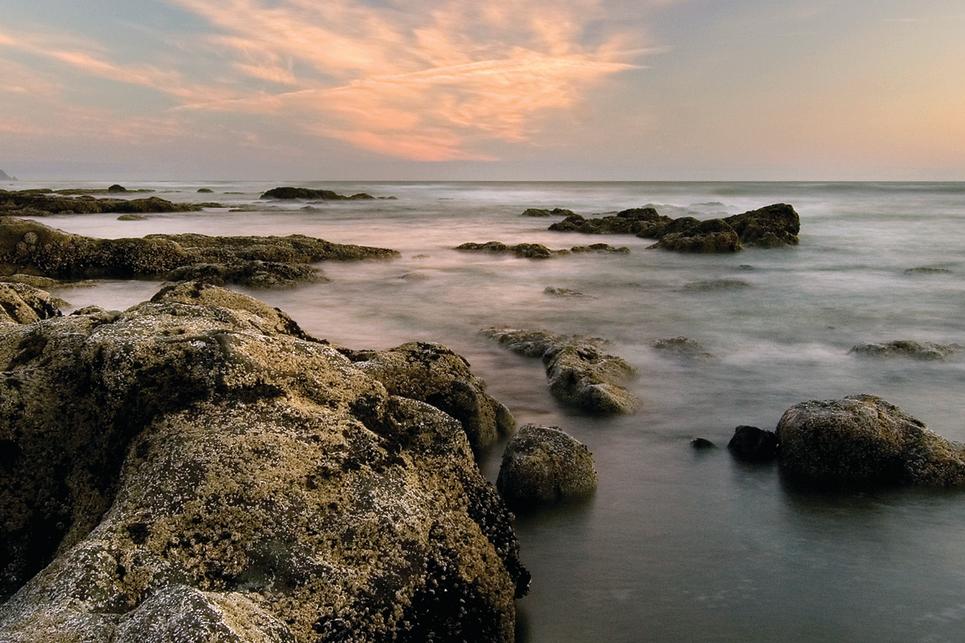
Bob Creek Wayside
2. Rock Creek Wilderness
Just like the Cummins Creek Wilderness, the Rock Creek Wilderness is a remote area within the Siuslaw National Forest in Oregon’s Coast Range. There are no developed trails but two streams — Rock Creek and Big Creek — flow through Sitka spruce forests. Stick to the nearby campground, or explore the wilderness cautiously.
Getting there: From Florence, head 15 miles (24 km) north along Hwy 101. Turn right onto Big Creek Rd/National Forest (Forest Service)-57. From Newport, follow Hwy 101 for 34.5 miles (55.5 km) south. Turn left onto Big Creek Rd/NF-57.
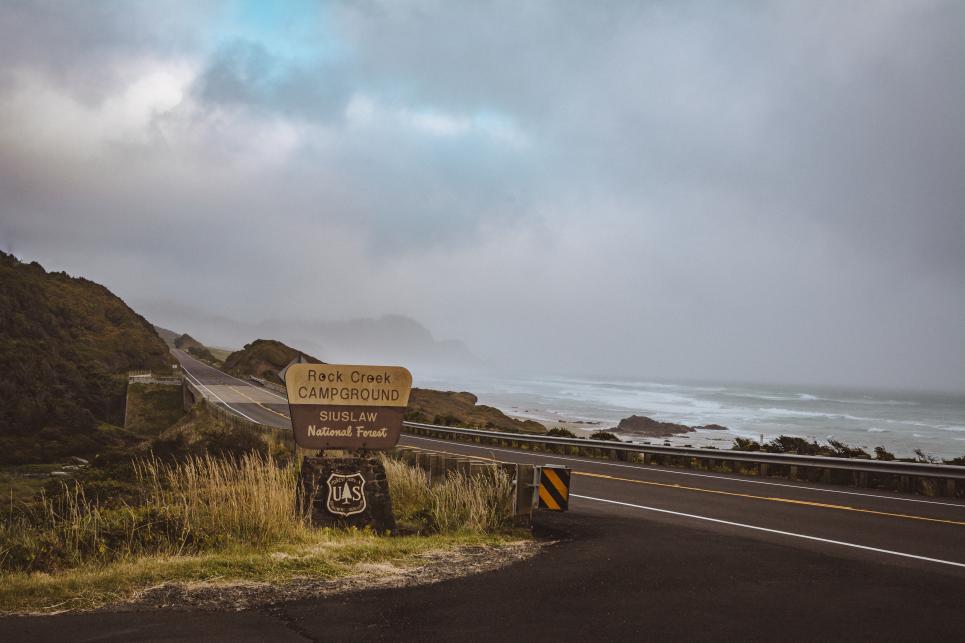
Rock Creek
Cascade Mountains
3. Diamond Peak Wilderness
The Diamond Peak Wilderness is the southernmost wilderness in the Eugene, Cascades & Coast region above Oakridge in the Willamette National Forest. Diamond Peak was formed as the entire land mass of the Cascades was undergoing volcanic activity. Glaciers carved the large volcanic peak and when they receded, much of the mountain remained. About 14 miles (22.5 km) of the Pacific Crest National Scenic Trail pass through the Diamond Peak Wilderness.
Getting there: There are several places to enter the Diamond Peak Wilderness, all along Hwy 58, which connects I-5 near Eugene to U.S. Route 97. Take Hwy 58 to the Pengra Pass trailhead, to Forest Service Rd 23 or Rd 2149. Hwy 58 to Forest Service Rd 5810 to the Yoran Trailhead. Hwy 58 to Forest Service Rd 60 to the Whitefish, Fawn Lake and Windy-Oldenburg Trailheads. Hwy 58 to Forest Service Rd 60 to Forest Service Rd 6010 to the Snell Lake and Summit Lake Trailheads.
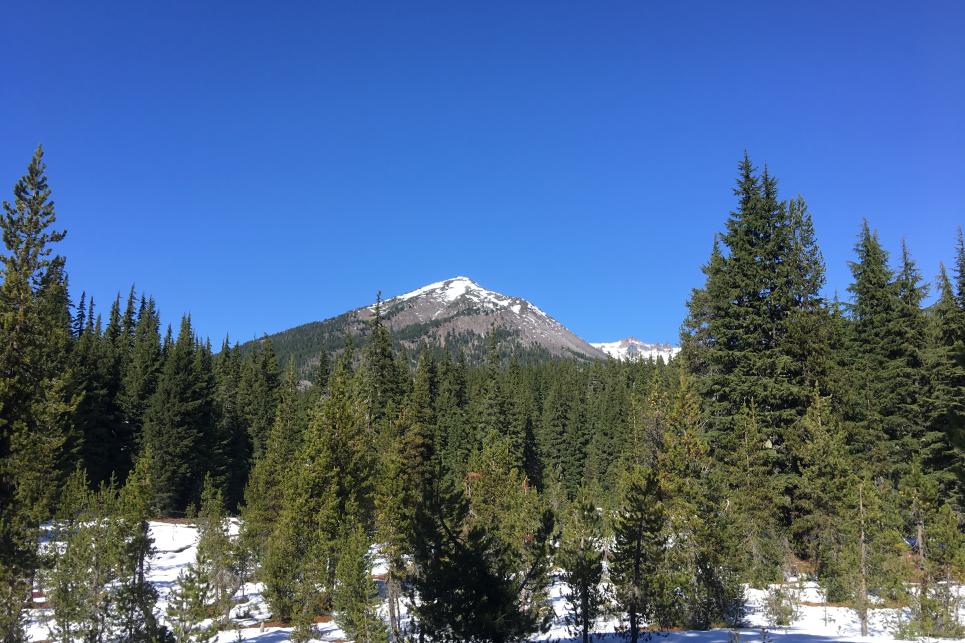
Diamond Peak Wilderness
4. Waldo Lake Wilderness
The Waldo Lake Wilderness is just north of the Diamond Peak Wilderness, above Oakridge in the Willamette National Forest. (Due to 2022 wildfires, some sections and trails may still be impacted as the area recovers.) Within the wilderness area, there is an impressive array of trout-filled lakes scattered throughout the 37,162 acre (15038.9 ha) Wilderness. A system of 84 miles (135 km) of trails lead to many of the lakes, including Six Lakes and Wahanna Lakes, the most popular hikes in the area.
But don’t let the name fool you — Waldo Lake itself is just outside of the eastern boundary of the Wilderness and not included in this territory. But, that doesn’t mean Waldo Lake isn’t worthy of exploring. Formed by glaciers 10,000 years ago, Waldo Lake is Oregon’s second largest natural lake and one of the purest lakes in the world — some rank it third. Filled by springs and snow melt, Waldo Lake harbors very little plankton, and only fish stocked until 1991. The lake bottom can be visible on a calm day through 100 ft (30 m) of indigo water.
Getting there: Take Hwy 58 to Oakridge. Trailhead access off Forest Service Roads 24 (Salmon Creek Road), 19 and 5897.
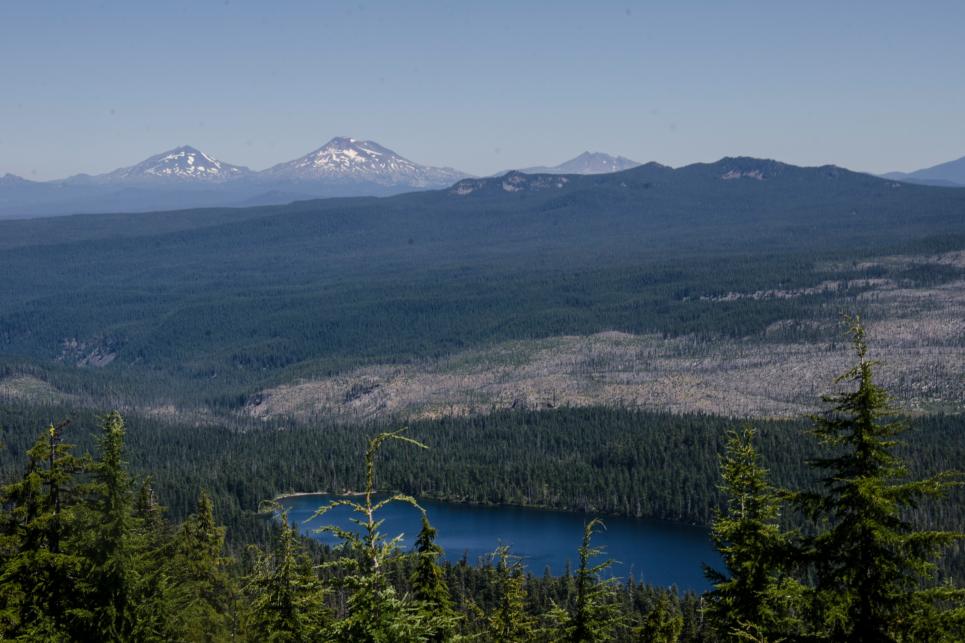
Waldo Lake Wilderness
5. Three Sisters Wilderness
Just north of Waldo Lake, you’ll find the Three Sisters Wilderness in the Deschutes National Forest. This is one of the most accessible and scenic areas on the list. North, Middle and South Sister, all more than 10,000 feet (3,048 m) high, and Broken Top inspire hikers and climbers to push their bodies to the limits with their 260 miles (418 km) of trails and jaw dropping views. Most of the trails begin in Douglas fir rich forest and climb to alpine meadows that lead to glacial and volcanic peaks.
Getting there: There are many trailheads throughout the Three Sisters Wilderness.
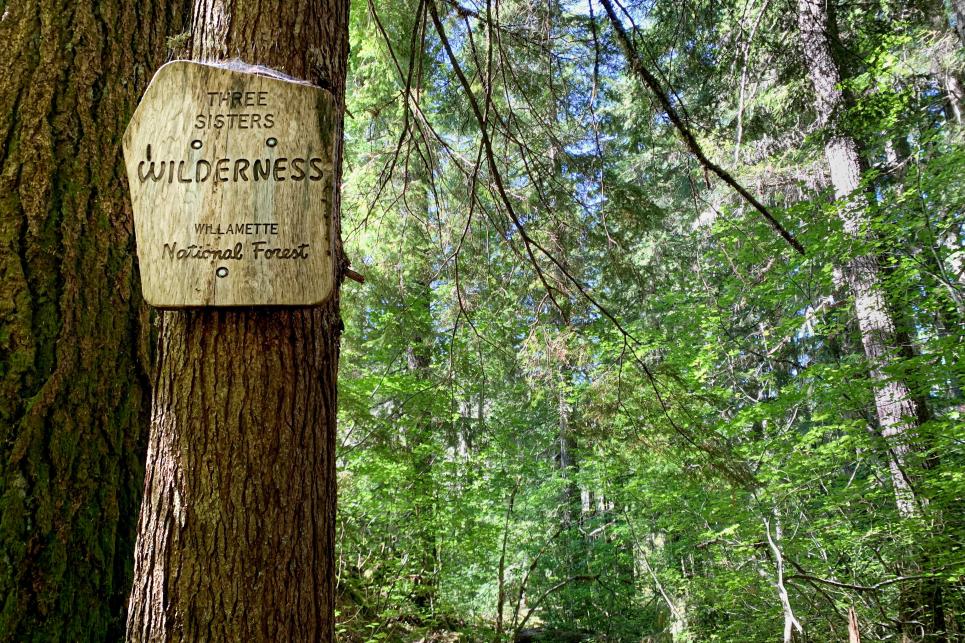
Three Sisters Wilderness
6. Mount Washington Wilderness
Please note: Access via Highway 242 is closed for repaving for 2024. Heading north, hike or mountain bike the Mount Washington Wilderness, a geological wonder in the Willamette National Forest. Explore 75 square-miles of lava-strewn planes, Mt. Washington, Belknap Crater and a 16-mile portion of the Pacific Crest Trail. Visit Dee Wright Observatory, where a manmade hut at the summit of McKenzie Pass is made entirely of lava.
Getting there: From the south take State Hwy 242 (McKenzie Pass Scenic Byway). Pacific Trail #2000 is to the west of Dee Wright Observatory. Benson Lake Trail #3502 and Hand Lake Trail #3513 are off Scott Lake Road 260.
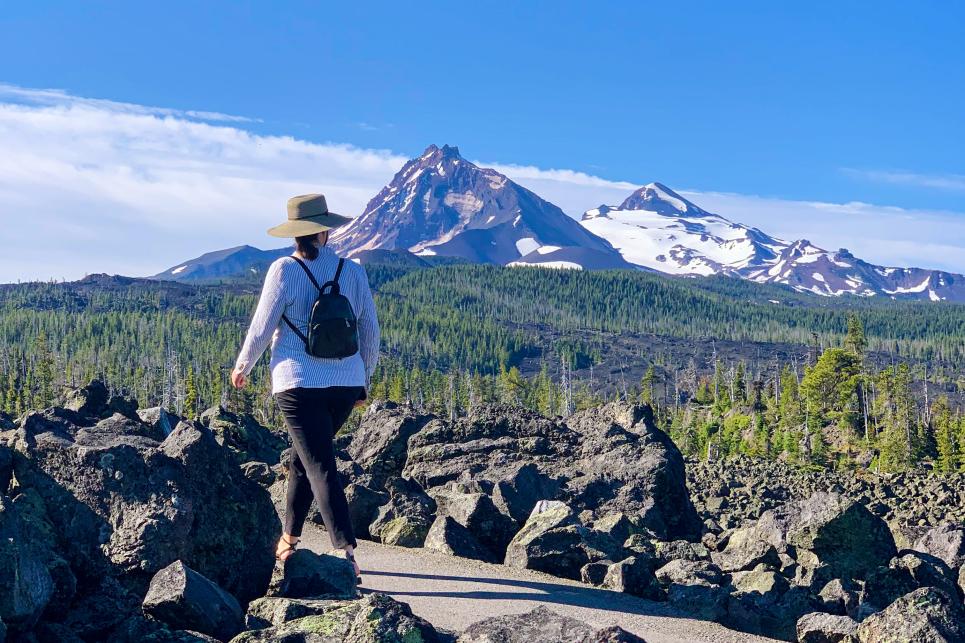
Hiking Near Dee Wright Observatory
More Oregon Wilderness
We aren’t the only Oregon region with wildly beautiful wilderness. Explore all 47 of Oregon’s wilderness areas. For a complete list of required passes for trailheads, go to the National Forest Service’s Recreation Passes & Permits page.
Know Before You Go
Check park and trail status, road conditions and the weather before heading out on your adventure. Find the tips…
Recreation Passes & Permits
Directory of federal, state and county passes and permits.
The Adventure Checklist
Here's how to explore the outdoors safely while making the most of the rich rewards that await you.
